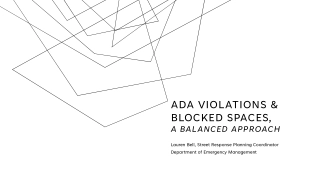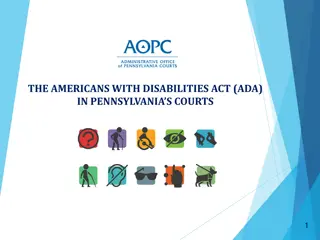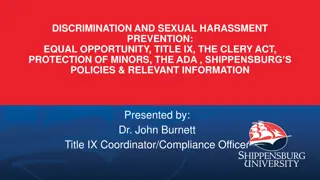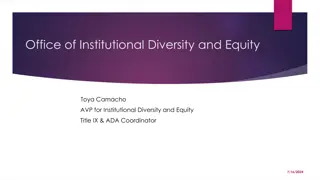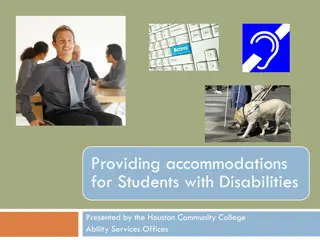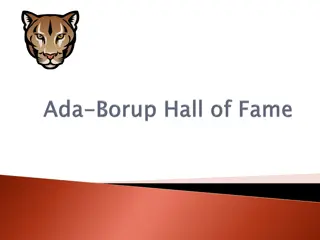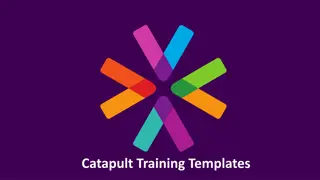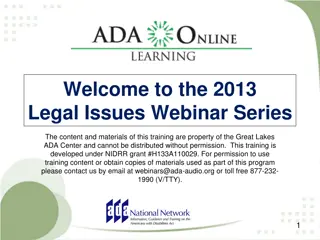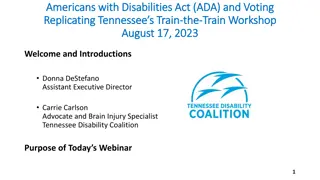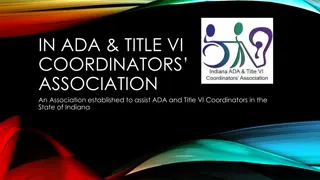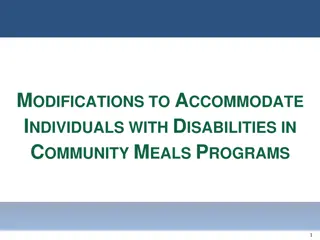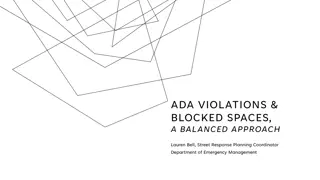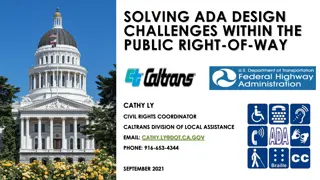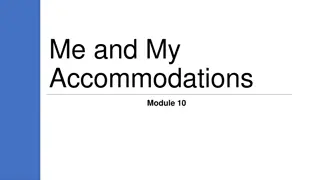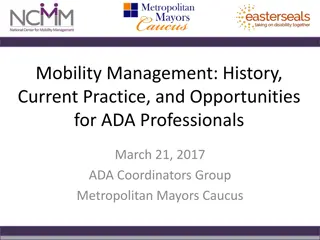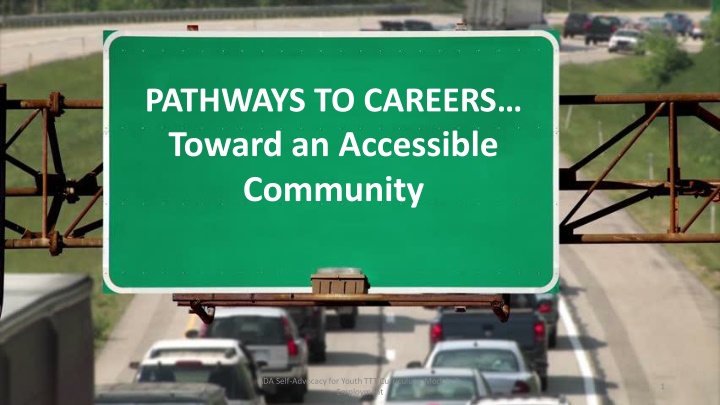
Enhancing Accessibility for People with Disabilities: Community Resources and Support
Explore how the Americans with Disabilities Act (ADA) empowers individuals with disabilities to navigate the community safely, access government programs, communicate with businesses, enjoy public places, utilize accessible transportation, and more. Learn about essential services and accommodations that promote inclusivity and equal opportunities for everyone.
Download Presentation

Please find below an Image/Link to download the presentation.
The content on the website is provided AS IS for your information and personal use only. It may not be sold, licensed, or shared on other websites without obtaining consent from the author. If you encounter any issues during the download, it is possible that the publisher has removed the file from their server.
You are allowed to download the files provided on this website for personal or commercial use, subject to the condition that they are used lawfully. All files are the property of their respective owners.
The content on the website is provided AS IS for your information and personal use only. It may not be sold, licensed, or shared on other websites without obtaining consent from the author.
E N D
Presentation Transcript
PATHWAYS TO CAREERS Toward an Accessible Community ADA Self-Advocacy for Youth TTT Curriculum: Module 3: Employment 1
Because of the ADA A person with a disability can expect to: Move around the community safely; Participate in government programs and receive services; Communicate with and receive services from businesses and government offices; Shop in stores; and Enjoy entertainment in public places such as concerts, movies, and festivals.
Getting Around the Community Audible signals at crosswalks to cross roads safely Curb cuts and ramps for people who have limited mobility or use wheelchairs Accessible parking places
Getting Around the Community: Accessible Transportation Accessible public transportation Paratransit services for people with disabilities who are unable to use public transportation Accessible taxi and shuttle services
Government Programs and Services Equal participation and access to government services Libraries Parks and recreational facilities Interpreters or other ways to communicate Equal access to voting locations
Effective Communication with Businesses and Government Agencies Braille Large Print Sign Language Interpreters Video Remote Interpreting Real Time Transcription Apps (Smart Phone, Tablet) Writing Notes
Telephones and Relay Services Businesses and government agencies who communicate by phone must try to talk to you in a way that you understand if you are D/deaf, deaf-blind, or have a speech disability. A Video Relay Service session, where a person who is Deaf or Hard-of- Hearing can communicate with a hearing person Telecommunications Relay Service (TRS) www.fcc.gov/consumers/guides/telecommu nications-relay-service-trs 7
Shopping in Stores and Eating in Restaurants Requesting assistance from store or restaurant staff Ability to shop independently by getting into and around a store, and reaching products Easily get into the store or restaurant Allowing service dogs into a business Receiving service in a restaurant Ordering food
Enjoy Places of Entertainment Accessible seating in theaters, arenas, entertainment spots Seating for others Equal access in buying tickets for events Audio description for people who are blind or have low vision Captioning devices for movies and shows

